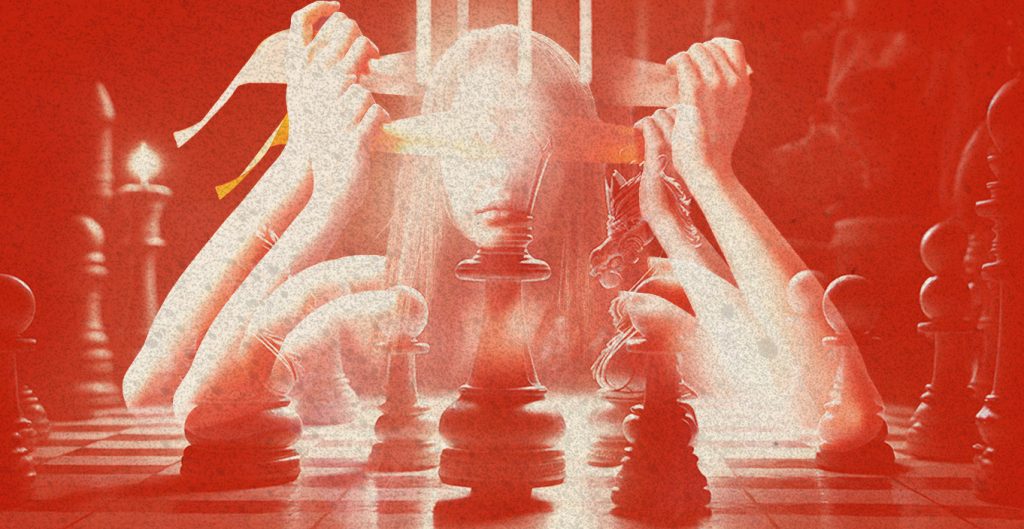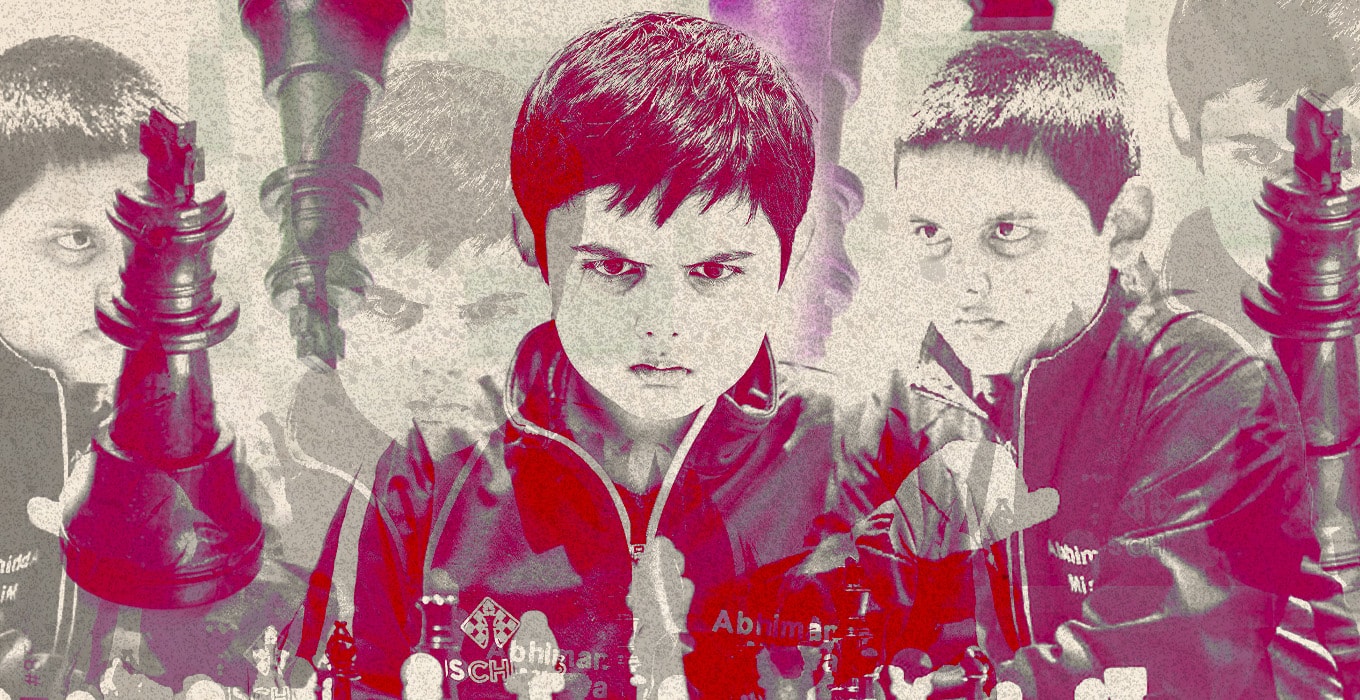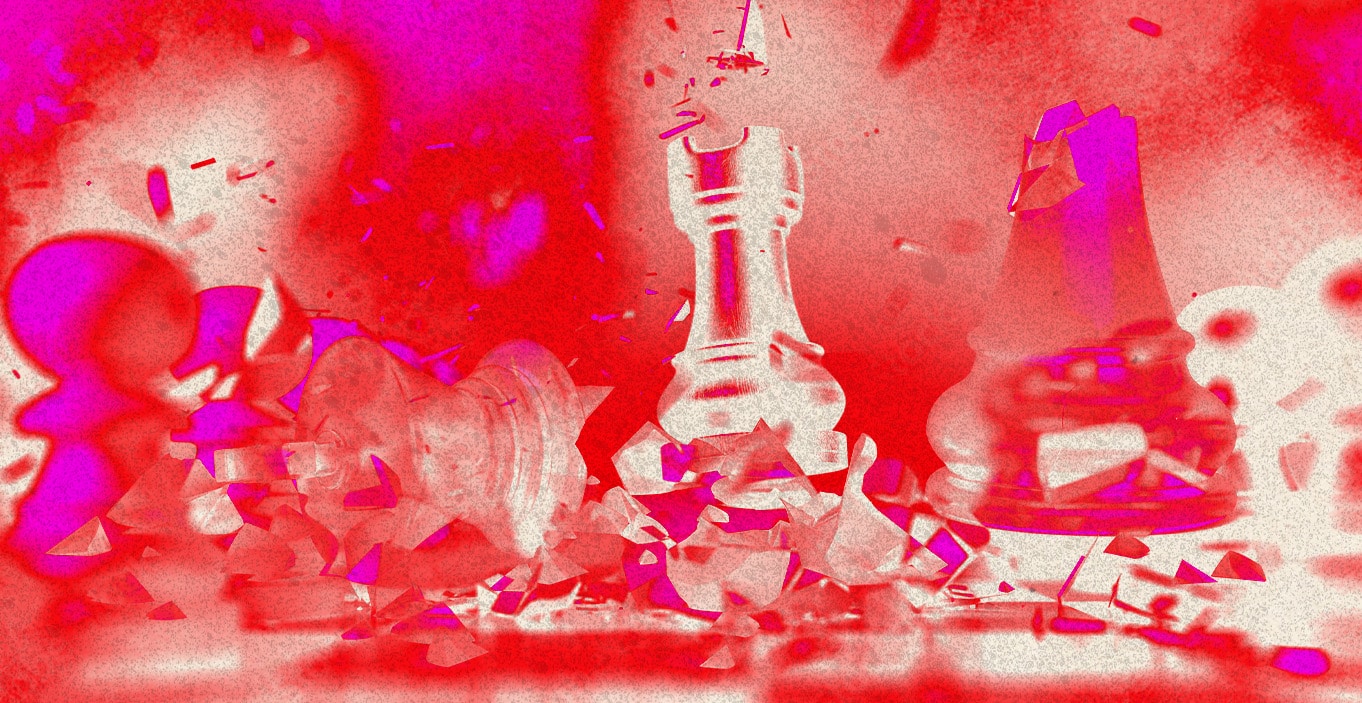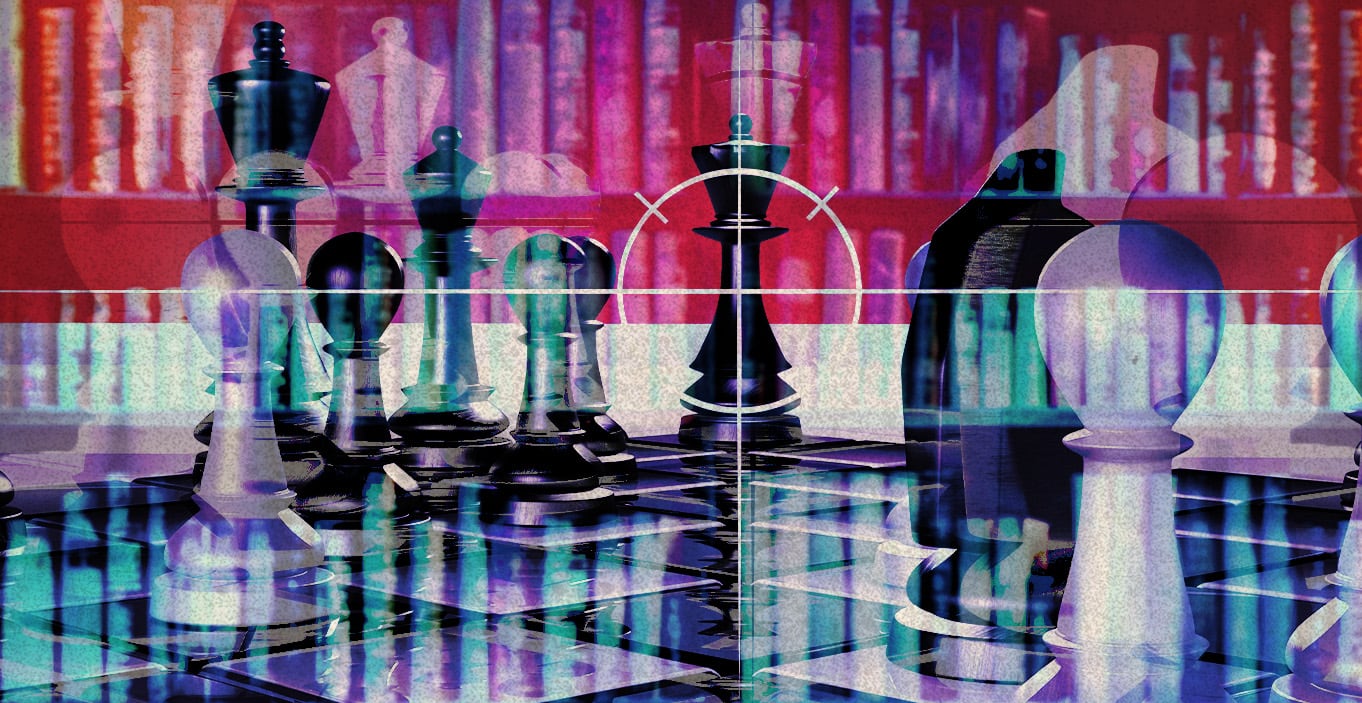One of the initiatives of the Chessable science team is “Featured Projects.” Separate from the Chessable Research Awards, which are for undergraduate and graduate students and their faculty research sponsors, featured projects may be led by any researchers, inside or outside of universities.
Giovanni Marchesich and Laura Tamburini are with SicuraMente-young Non Profit Organization, Trieste 34141 Italy. Their bios and more information about their blindfold chess tactics project are at this webpage. Here is their guest blog post for Chessable about their featured project.
The benefit of solving blindfolded tactics in young and adult players
by Giovanni Marchesich and Laura Tamburini
Blindfold chess is a special type of chess game where both the board and pieces are not visible to its players. Famous chess players of the past (e.g. Pillsbury, Koltanowski, Najdorf et al.) could successfully play 30-45 blindfold games simultaneously. A specific research area developed to study blindfold chess, pattern recognition, and visualization. Binet (1893, 1894) studied the abstract type of representation of such skilled players.
In the modern era, Saariluoma (1991), Saariluoma and Kalakoski (1997, 1998) studied the use of memory and decision making in blindfold chess and concluded that blindfold practice improves chess skills. Grandmaster Jonathan Tisdall (1997) argued that his ability to play chess blindfolded was one of the main reasons why he achieved the GM title. Campitelli and Gobet (2005) studied the mind’s eye in blindfold chess and argued that visual imagery plays an important role in problem solving. They showed how a theory of expert memory — the Template theory (Gobet & Simon, 1996, 2000) — accounts for most of blindfolded data. The results show that irrelevant information affects chess masters only when it changes during the presentation of the target game. Chabris and Hearst (2003) and Jeremic, Vukmirovic, and Radojicic (2010) found no significant statistical difference between the rapid and blindfold games.
RB Ramesh, Indian Olympiad team coach and one of the most successful and influential chess trainers in the world, gave an interview to New in Chess Magazine (2022/3). Ramesh said that most of his students visualize better because they can read chess books without using chess sets and boards. Ramesh claimed that his teaching method produces fantastic results.
Are blindfolded tactics educationally useful?
The aim of this featured project, supported by Chessable, was to verify the didactic usefulness of solving blindfolded tactics in young and adult players.
The project participants included 27 chess students of 14–30 years old. 20 are males and 7 are females, 12 students are under the age of 18 and 15 over the age of 18.
At the beginning of the project the subjects had a standard FIDE rating between 1650 and 2100 Elo. In three months (from May to July 2023), 12 lessons of 2 hours each were organized. Researchers measured two performance parameters (solving times of exercises and Elo FIDE rating change after training sessions) and compared them with their results before using this method.
The experimental design also included a control group of 11 chess students (8 males and 3 females) of the same age and playing level, who never have solved blindfolded tactics but only tactics traditionally, by reproducing the moves on the board.
Teaching method
To make the experimental group participants good at visualizing we created a cognitive path consisting of three steps:
1) to just remember the notation of moves, to be able to repeat this seeing the pieces as they move on the board and rebuilding the solution in their mind;
2) to give an easy position and make them find the moves: after solving many easy positions without moving pieces they will be able to visualize it in their mind and increase the length of the solutions;
3) to ask them to analyze and solve 13 blindfolded training positions with different levels of complexity.
In other words, the experimental group chess students got the written notation, without board or set, and visualized in their minds each of the positions. The maximum resolution time for each exercise is 40 minutes. Each exercise was administered to the subjects twice, 20 days apart, to consolidate the solving method. The average correct resolution time in the first step was 32 minutes, while in the second step the average time decreased to 27 minutes.
Data analysis and promising results
We analyzed correlations between chess playing performance improvements — measured by solving times of tactics exercises on the chessboard and FIDE Elo rating change after training sessions — and the experimental cognitive path with the three steps of blindfolded training interaction, compared to participants in the control group. We measured solving times of ten tactical exercises from Neishtadt (2010). Both experimental and control group subjects have solved the same ten tactical exercises.
At the end of the experimental training we organized two tournaments: one with standard rate of play (90 minutes plus an additional 30 seconds for each move) and another with rapid rate of play (10 minutes plus an additional 5 seconds for each move).
This interaction is significant (p <0.005) in solving tactics times (with an average reduction of 31%) and in Rapid FIDE Elo rating (with an average increase of 26%). The interaction is less significant but still interesting (p=0.3) in Standard FIDE Elo rating. This result could also be influenced by the fact that, in addition to tactical exercises, strategy studies and middle-game analyzes are also useful to improve playing performance in the standard time.
Significant are differences in the improvement (both in solving tactics times and in Rapid FIDE Elo rating) as a function of FIDE Elo rating under vs over 1900 Elo (p<0.05) with a greater improvement for players over 1900 Elo rated and as a function of gender (p<0.01) with a greater improvement for males. There aren’t differences in the improvements as a function of age under vs over 18 years old (p>0.5). In control group participants the interaction is not significant (p>0.5) both in solving tactics times and in Standard and Rapid FIDE Elo rating.
There may be biases due to the different size of the control group compared to the experimental group and the number of females compared to that of males.
Our study may indicate that objective changes in chess-playing performance can be reliably induced by solving specific blindfolded tactics in a chess training program. The promising results of this pilot study encourage us to organize a new experimental design in the winter with more significant and homogeneous samples (experimental and control groups) to prepare a detailed “Blindfolded tactics training protocol” adaptable to different playing levels of the subjects.
References
Binet, A. (1893). Les grandes memoires: Resume d’une enquete sur le joueurs d’echecs. Revue des Deux Mondes, 117, 826-859. In M. L. Simmel & S.B. Barron (Trans.). Mnemonic virtuosity: A study of chess players, Genetic Psychology Monographs, 74, 127-162.
Binet, A. (1894). Psychologie des grands calculateurs et joieurs d’échecs. (Psychology of great calculators and chess players). Paris: Hachette.
Campitelli, G. & Gobet, F. (2005). The mind’s eye in blindfold chess. European Journal of Cognitive Psychology, 17, 23-25.
Campitelli, G., & Gobet, F. (2008). The role of practice in chess: A longitudinal study. Learning and Individual Differences, 18(4), 446–458.
Chabris, C. F., & Hearst, E. S. (2003). Visualization, pattern recognition, and forward search: Effects of playing speed and sight of the position on grandmaster chess errors. Cognitive Science, 27, 637–648.
Gobet, F., & Simon, H. A. (1996). The roles of recognition processes and look-ahead search in time-constrained expert problem solving: Evidence from grand-master-level chess. Psychological Science, 7(1), 52–55.
Gobet, F., & Simon, H. A. (2000). Five seconds or sixty? Presentation time in expert memory. Cognitive Science, 24, 651-682.
Jeremic, V., Vukmirovic, D., & Radojicic, Z. (2010). Does playing blindfold chess reduce the quality of game: Comments on Chabris and Hearst (2003). Cognitive Science, 34(1), 1–9.
Neishtadt Y. (2010). Improve your chess tactics: 700 practical lessons & exercises. New in Chess: Alkmaar, The Netherlands.
New in Chess Magazine (2022). Interview: RB Ramesh, 3, 40-47.
Saariluoma, P. (1991). Aspects of skilled imagery in blindfold chess. Acta Psychologica, 77, 65–89.
Saariluoma, P., & Kalakoski, V. (1997). Skilled imagery and long-term working memory. American Journal of Psychology, 110, 177–201.
Saariluoma, P., & Kalakoski, V. (1998). Apperception and imagery in blindfold chess. Memory, 6, 67–90.
Tisdall, J. (1997). Improve your chess now. London: Cadogan.
——————————————————————
To learn more about Featured Projects and the initiatives of the Chessable science team, visit https://www.chessable.com/science and click on the green banner “View Our Active Scientific Research.”





